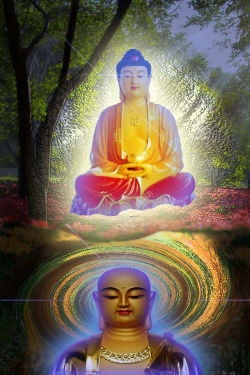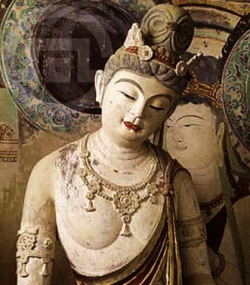Nature of Nirvana
Ultimate end of Buddhist philosophy is nirvana which literally means ‘extinguished’.
Some people, according to the origin, interpret it to mean the end of life but this idea is wrong. had it been so, Buddha would not have attained nirvana before his death.
It is equally incorrect to interpret Buddha’s silence to mean that the person who achieves nirvana has no existence after death, Nirvana means the extinguishing of fires of passion.
In it the fires of avarice, Jealousy, anger and doubt are extinguished and impurities completely.
It effects the end of the cycle of rebirth.
In Buddhist literature profuse mention is made of the lighting and extinguishing fire.
Nirvana has been said to be or described as a state of calm or equanimity in which passions and the sorrows accruing from it are completely becamed.
It is neither the destruction of existence not inactivity. Nirvana can be attained in this life.
A rational and social life is not precluded form it. Buddha’s own life can exemplify this aspect.
Nirvana does not imply abstention form action but from the attachment, repulsion and labor conjoined to action.
The body does exist in the state of nirvana but the thirsting is destroyed.
It is similar to the liberation while living, a conception of the Upanishads. but there is no rebirth after nirvana.
The person attaining nirvana goes out like a light.
According to Rhys David’s nirvana is like the calm, sinless state of the mind and it can best be expressed as purity of perfect peace.
Having once attained spiritual consciousness permanently, there is no longer any necessity for persisting in a state of concentration and there is no longer any fear of limitation due to actions.
Actually according to Buddha, attachment, repulsion etc., when present, cause the action to become a limitations like rebirth. As in the case of seeds, plants grow only when the seed is fresh and not fried when sown.
So in the case of actions.
Actions performed without attachment do not cause any restrictions. In nirvana the individual’s ego is destroyed because its substratum, pain and longing etc. have been completely eliminated.
Nirvana is in ever, conceivable aspect a state of unrestricted calm.
A free person has perfect insight, perfect impassion, pure place, perfect control, calm mind, calm word and calm actions.
State of Peace:
In Pali religious texts, nirvana is described as a state of peace. In the Pitakas, nirvana has been described by adjectives such as eternal health, ultimate end, perfect safety and place of no fear.
In the Dhammapada it has been called a state of perfect bliss, perfect peace and freedom from greed and doubt.
Nirvana is neither eternalism nor nihilism.
It is stated by Buddha that it is unknown, unique, uncreated and uncultured. Had there not been some eternal then there was no escape for the birth.
According to Oldenburg, that there is some eternal for Buddha, only means that the person born can be free from the curse of birth.
Nirvana is painlessness, purity, consummation of moral efforts, freedom, real bliss, escape from passions, perfect peace, perfect self-control and complete extinction of birth and sorrows.
In this way nirvana is indescribable.
As Dr. Keith expresses it, all practical words are inappropriate in the description of the indescribable.
According to Dr. Dasgupta too, nirvana cannot be described in terms of physical or worldly experience.
It can neither cannot be described in terms of physical or worldly experience.
It can neither be said to be positive nor negative. it is an extraordinary, indescribable state beyond thought.
It is deep and unfathomable like the ocean.
Nagasena, the famous Buddhist preacher, while describing nirvana to king Milind with the help of similes, had said that those who have no experience of nirvana cannot feel it by means of these similes.
Forms of Nirvana:
Some of the oldest pali texts book upon nirval as a moral state achieved in this life.
Some of the later Sanskrit texts treat unqualified absolute nirvana at the death of the being after which there is no life.
Hinayana and Mahayana have wrought some changes in the meaning of nirvana.
Nirvana has been attributed two forms
(1) Sopadhi sesa, and
(2) Nirupadhi sesa.
In the first, some impressions reside due to rebirth, the second means complete extinction.
Result of Nirvana:
With nirvana the reasons for birth come to an end and the probability of rebirth and pain after death is excluded.
The person who has achieved nirvana spends a life of perfect knowledge and calm till death.
Actually, worldly pleasures and ordinary experience are incapable of describing nirvana.
It can only be said that in Nirvana man becomes relieved of all his pains.
Even before attaining perfect liberation man sheds his pains as he progresses towards the state of nirvana.




